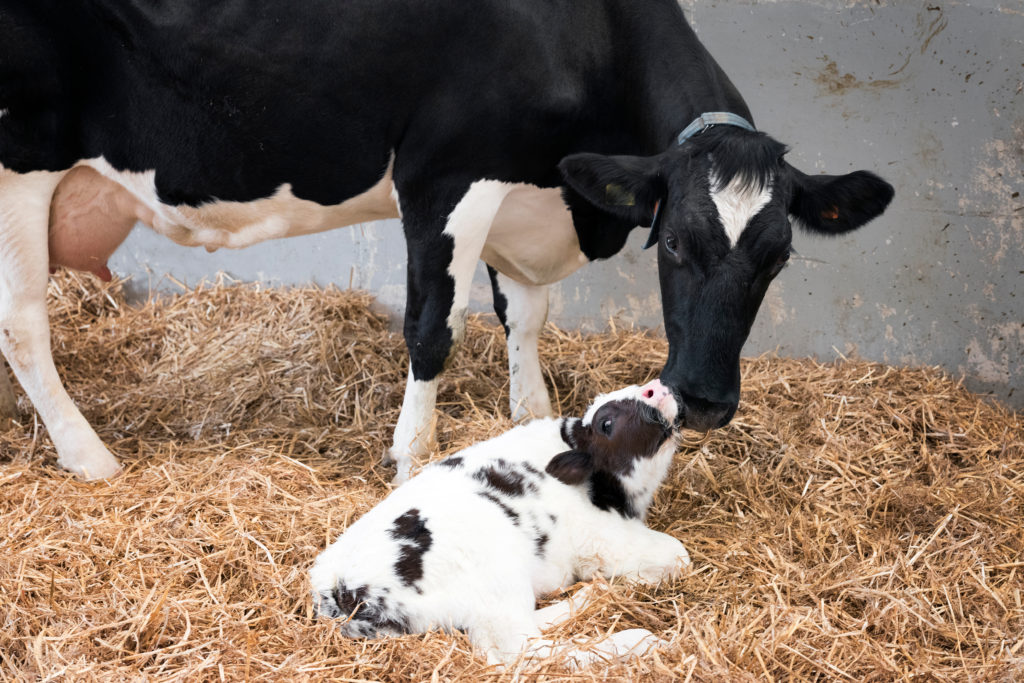The dry period is commonly regarded and backed by research to be our greatest opportunity to minimise feed costs, reduce complication risk, and increase production efficiency. Irrespective of system and management, here’s the impact of some of the most common profit-draining challenges that can arise from the transition period.
| Challenge area | Average cost per case |
| Milk Fever (clinical) | £200-£250 |
| Mastitis | £250-£300 |
| Lameness | £180 |
| Calving index | £5 per day over the calving index target |
| Pneumonia | £30-80 |
| Calf scours | £60 |
| Mortality | £200-£500 |
All costs referenced from AHDB
Supporting a cow’s vital digestive, immune, and reproductive system during the dry period is key. The result – a more efficient cow, a more profitable business, and a more sustainable system.
From drying off to early lactation, cows often experience a 25-40% ‘dip’ in immunity, making them more prone to the health challenges that get in the way of productivity. One of the key reasons being that the unborn calf increases in weight and size by 75-80% during the last three months of pregnancy; impacting on ‘rumen fill’ and putting a greater pressure on the cow.
Here’s how you can overcome these challenges.
Countdown to calving checklist
8-12 weeks to calving
Aim for a body condition score of 2.75 heading into the dry period. Cows over 3.25 will likely face excessive condition loss at calving and subsequently reduced fertility. Cows under 3 have an increased risk of poor function. Energy levels will need to be carefully and gradually balanced and adjusted to hit targets before the critical dry period. NADIS offer a comprehensive guide on carrying this out.
6-8 weeks to calving
Colostrum production starts now! Dry cows off to allow sufficient time for them to repair and prepare for birth. With around 60 percent of all early lactation mastitis originating from the dry period, make sure your drying-off protocol is on track.Minerals and trace elements are essential at this stage to reduce the chances of health challenges such as retained cleansings, and to assist the calf with growth and development.
1-3 weeks to calving
The nutrient demand of the rapidly growing foetal calf is now at its highest. With dry matter intake (DMI) reducing rapidly due to less space for the rumen, it is important to make sure that you are supplying a moderately energy dense diet to make up for reduced intakes to help meet energy demands of the cow.Consider separating cows into a ‘close calving pen’ to allow cows to be more comfortable and to help reduce stress.If cows are more mature, are holding large or multiple calves, haven’t reached optimal BCS, and/or have a history of low calcium in previous calving’s, take proactive steps to reduce the risk of milk fever or sub-clinical calcium deficiency.
At calving
Monitor cows closely for any retained cleansing (this should pass within 12–24 hours of calving), poor appetite, and an abnormal temperature (38.6 – 38.8°C), and react quickly.Ensure you meet the energy and protein demands of a newly calved cow, which has now doubled from the pre-calving demand. This is vital in maintaining milk production, reducing the risk of negative energy balance, and promote an optimal recovery after giving birth – particularly in heifers. Consider rehydration powders to encourage water and subsequently dry matter intake.
1-week post-calving
Don’t take your finger off the pulse! Attention to the newly calved cow’s health is still vital, not only for this lactation but for the next. Providing your cows with a diet that meets energy, mineral and trace element requirements will allow your cow to get on track that will result in good yield, fertility, and performance.
Building trace element reserves during the dry period
Cobalt, copper, iodine and selenium are all essential for the digestive, immune, and reproductive systems to function properly. In most cases, forage alone does not offer enough of these trace elements to satisfy the needs of the modern productive herd.
The threat of deficiency is at its greatest during the transition dry period. During this time, demands are at their highest, but appetite is potentially at it’s lowest. This leaves us unsure as to whether the cow is getting enough trace elements when she needs it most.
By proactively bolusing with ANIMAX Tracesure before the dry period, you can be rest assured that every cow is getting a supply of enough trace elements every day during this critical period.
ANIMAX Tracesure Cattle XL is the only bolus on the market that can offer enough trace elements at the above levels in one single application. Other boluses on the market require 2-4 times the applications for cattle weighing 500kg and over.



Pingback: Are they getting enough to transition smoothly? - Carr's Group